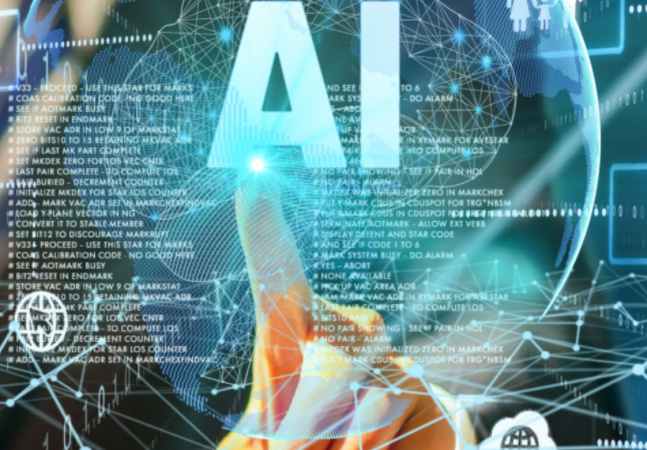The Role of AI in Wildlife Preservation conservation
Introduction
In the realm of environmental conservation, the utilization of artificial intelligence (AI) has emerged as a revolutionary force. As human activities continue to pose significant threats to wildlife, innovative solutions are imperative. This article explores the transformative role of AI in wildlife preservation, highlighting its applications and impact on conservation efforts.
Challenges in Wildlife Preservation
The intricate web of challenges faced by wildlife preservation includes human-induced habitat destruction, climate change, and poaching. Traditional conservation methods struggle to keep pace with the dynamic nature of these threats, necessitating a paradigm shift towards technological interventions.
Enter AI: A Game-Changer
AI Technologies Overview
Artificial intelligence encompasses a range of technologies, including machine learning, predictive analytics, and automation. These tools, when strategically employed, offer unprecedented capabilities to monitor, analyze, and address challenges in wildlife preservation.
Potential Applications in Wildlife Preservation
From monitoring wildlife populations to predicting threats and mitigating poaching risks, AI holds the potential to revolutionize conservation practices. The integration of these technologies marks a crucial turning point in the fight to protect endangered species and their habitats.
AI-Powered Monitoring Systems
Drones and Satellite Technology
One of the key applications of AI in wildlife preservation is the deployment of drones and satellite technology for aerial surveillance. These systems provide real-time data on habitat conditions, allowing for swift responses to emerging threats.
Real-time Data Collection
The ability of AI to process vast amounts of data in real-time enhances the efficiency of monitoring efforts. Conservationists can now access up-to-the-minute information, enabling them to make informed decisions and implement timely interventions.
Read More:
Predictive Analysis for Conservation
Machine Learning Algorithms
AI’s predictive capabilities, fueled by machine learning algorithms, empower conservationists to anticipate potential threats. By analyzing historical data and identifying patterns, these algorithms contribute to strategic planning for wildlife preservation.
Anticipating Threats and Planning Interventions
The proactive nature of AI-driven predictive analysis enables conservationists to stay one step ahead of potential threats. From natural disasters to human encroachment, AI equips preservation efforts with the foresight needed to protect vulnerable ecosystems.
Wildlife Population Monitoring
Tracking Endangered Species
AI plays a pivotal role in tracking and monitoring endangered species. Through advanced image recognition and tracking technologies, conservationists can gather critical data on population dynamics, migration patterns, and breeding behaviors.
Population Dynamics Analysis
The analysis of wildlife population dynamics is essential for understanding the health of ecosystems. AI facilitates in-depth studies, allowing researchers to identify factors influencing population trends and implement targeted conservation measures.
Anti-Poaching Efforts
AI in Identifying Poaching Patterns
Poaching remains a significant threat to many endangered species. AI’s capacity to analyze vast datasets aids in identifying poaching patterns, enabling law enforcement agencies to focus efforts on high-risk areas.
Enhanced Surveillance Techniques
AI enhances surveillance techniques, making it possible to monitor expansive wildlife reserves effectively. Automated systems can detect suspicious activities, alerting authorities to potential threats and enabling swift responses.
Habitat Protection and Restoration
AI-Driven Mapping and Analysis
Accurate mapping of habitats is crucial for effective conservation. AI-driven mapping technologies provide detailed insights into ecosystems, aiding in the identification of areas that require protection and restoration.
Restoring Ecosystems Through Data Insights
AI’s ability to process complex ecological data facilitates the development of restoration strategies. By understanding the intricate relationships within ecosystems, conservationists can implement targeted initiatives to restore habitats.
Challenges and Ethical Considerations
While AI brings promising advancements, it is not without challenges and ethical considerations. Striking a balance between technological progress and ethical concerns is crucial to ensure responsible and sustainable use of AI in wildlife preservation.
Success Stories
Numerous success stories highlight the positive impact of AI in wildlife preservation. From saving endangered species to restoring degraded habitats, these instances showcase the tangible benefits of embracing technology in conservation efforts.
The Role of Citizen Science
In the era of AI, citizen science takes on a new dimension. Engaging the public through technology fosters a sense of collective responsibility and allows individuals to contribute to wildlife preservation through collaborative efforts.
Future Prospects
As technology continues to evolve, the future holds exciting prospects for AI in wildlife preservation. Advancements in AI-driven monitoring, analysis, and conservation strategies promise to elevate the effectiveness of global conservation efforts.
Conclusion
In conclusion, the integration of AI in wildlife preservation represents a transformative leap forward in conservation practices. While challenges and ethical considerations persist, the positive impact of AI on monitoring, analysis, and intervention strategies cannot be overstated. The collaboration between human expertise and AI technologies is essential for the sustained protection of our planet’s biodiversity.
FAQs
- What is the main role of AI in wildlife preservation?
- AI plays a crucial role in monitoring, analyzing, and addressing threats to wildlife, offering innovative solutions for conservation.
- Are there any downsides to relying on AI for conservation efforts?
- While AI brings significant benefits, challenges include ethical considerations and the need for responsible and sustainable implementation.
- How can individuals contribute to AI-powered wildlife preservation?
- Engaging in citizen science initiatives and supporting organizations utilizing AI for conservation are impactful ways for individuals to contribute.
- Are there any notable success stories showcasing AI’s impact on wildlife protection?
- Yes, there are numerous success stories where AI has played a pivotal role in saving endangered species and restoring ecosystems.
- What ethical considerations should be taken into account when implementing AI in conservation?
- Ethical considerations include privacy issues, data security, and ensuring that AI interventions align with conservation goals and values.









